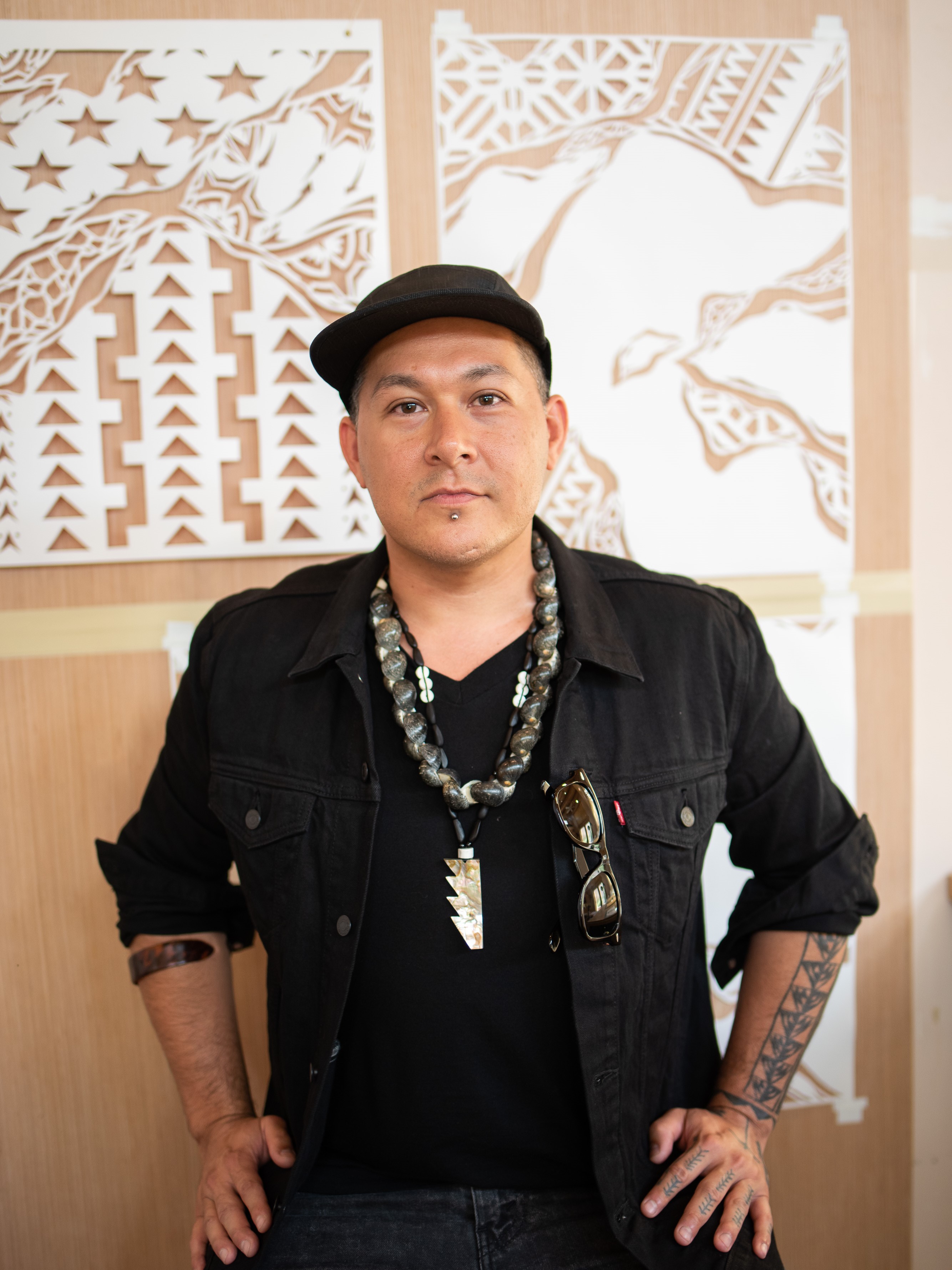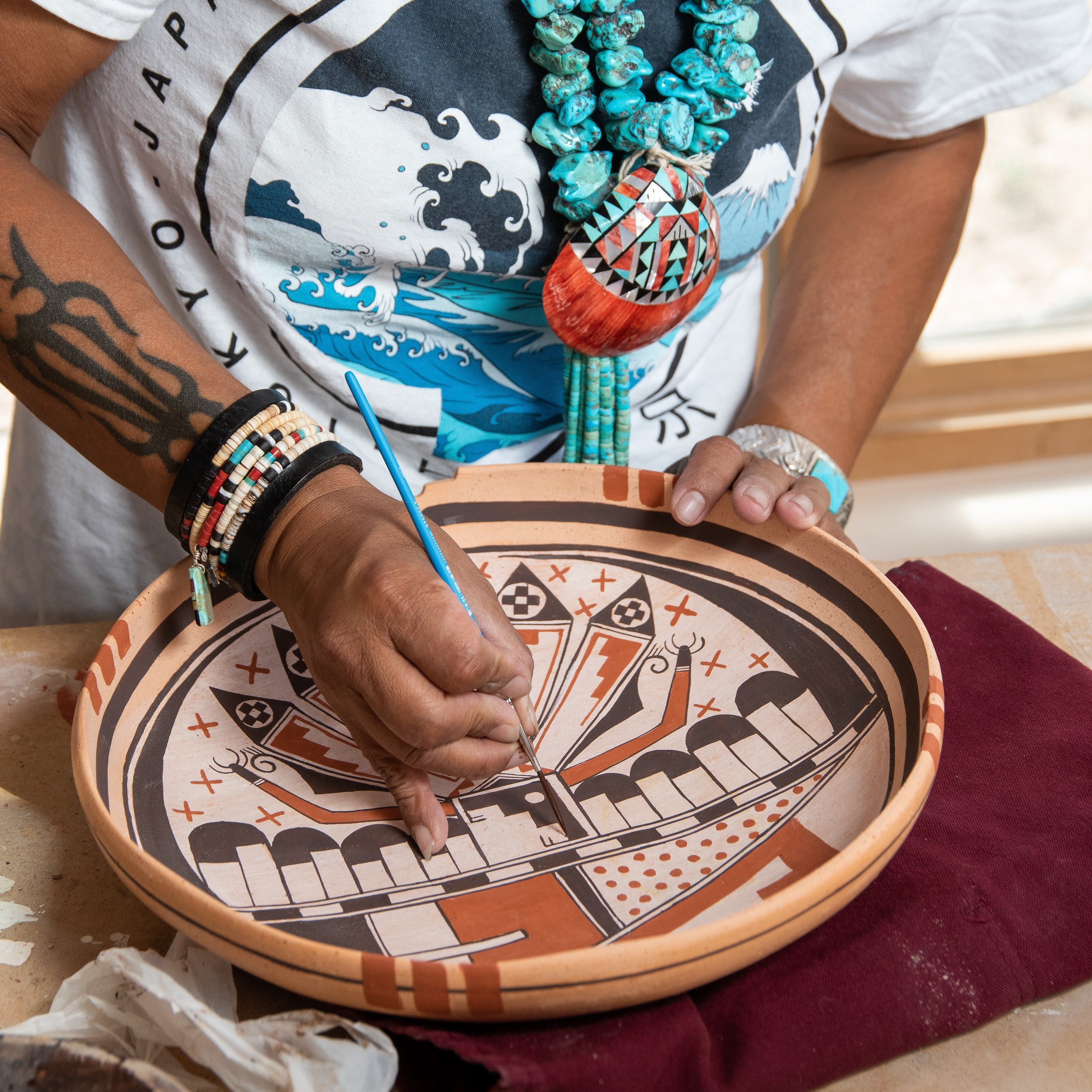A Sunny Studio Fosters Creativity

SAR’s Dubin Studio under construction in 1997, photographer unknown; and completed Dubin Studio, photo by Jason S. Ordaz.
Two decades ago, with a vision of a space for artists that would elicit feelings of warmth and personality, SAR commissioned a new artist studio. The Native American artist fellowship program—then in its fourth year—needed a space more conducive to artistic creativity. The Dubin Studio was built adjacent to the Indian Arts Research Center (IARC) through the generosity of Ronald and Susan Dubin.
In 1997 the Dubin Studio welcomed its first artist: Kevin Navasie, a Hopi weaver from Second Mesa. Complete with clerestory and full-length windows, French doors that open to a peaceful patio, and a portal where artists can watch Santa Fe’s summer monsoons or winter snowstorms, the Pueblo Revival–style building has now been a working space for over seventy fellows. This summer and fall, the studio helps SAR continue a long-standing legacy of giving artists the time and space they need to develop new work.


Freehand cut paper and ink sketches created for a series of I’e Kuku / Kupa beaters, Ian Kuali’i. Photo by Garret Vreeland.
Armed with an x-acto blade, Ian Kuali’i (Kanaka Maoli / Native Hawaiian and Apache heritage) used his time in the Dubin Studio to create intricate and delicate hand-cut paper works. Drawing from years in the New York graffiti- and streetart scenes, self-taught Kuali’i merges traditional imagery with a contemporary aesthetic and explores ideas of indigeneity, progress, and biodiversity, as well as his own personal history. Some of Kuali’i’s newest pieces, created during his time as SAR’s 2019 Ronald and Susan Dubin Native artist fellow, include hidden words or figures of Ku, a Native Hawaiian deity. Kuali’i explains that the Hawaiian idea of kauna, in which words and phrases can have multiple meanings, is at play in his creations. Of his process he says, “One can’t erase a razor line, so the process teaches me to be patient and gentle, while at the same time, I’m destroying to create.” The process is in many ways meditative. He adds, “This work has taught me to breathe and allow breath and blade to guide me as opposed to me guiding the blade.”

Timothy Edaakie, SAR’s 2019 Rollin and Mary Ella King Native artist fellow. Photo by Garret Vreeland.

Timothy Edaakie working in the Dubin Studio. Photo by Garret Vreeland.
This piece was originally published in the 2019 Autumn/Winter issue of SAR Now – a print newsletter mailed bi-annually to all SAR members.
Receive the next issue straight to your mailbox by becoming a member today.